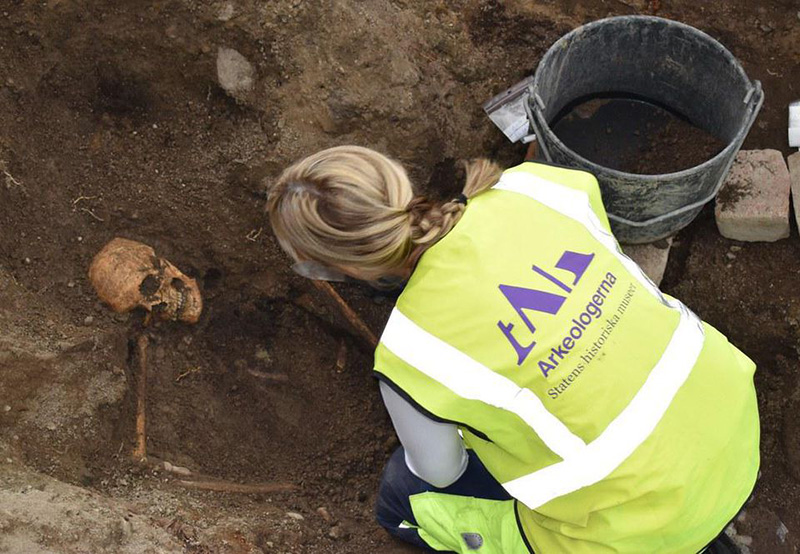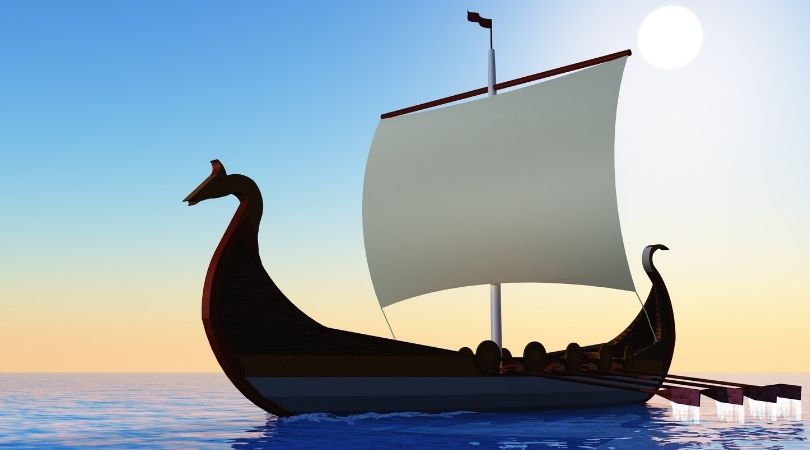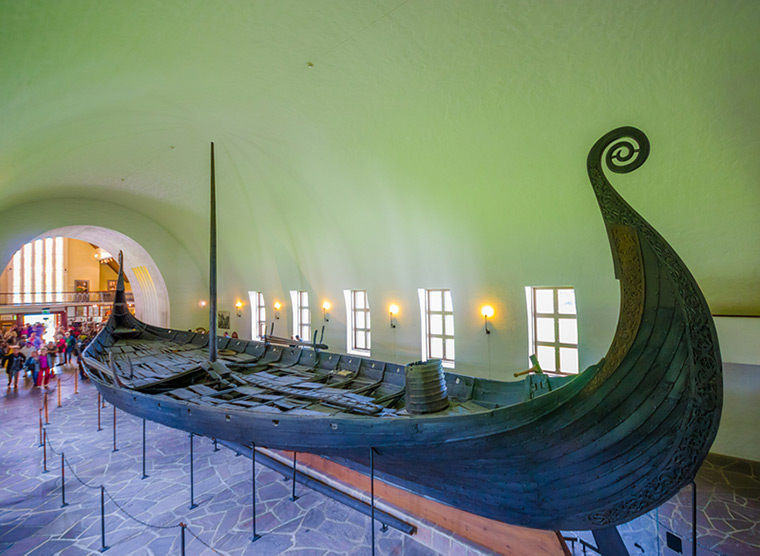
Results from a major new research project suggest that the Viking Age may have looked quite different to what the history books present.
An international research project analysed DNA from 400 Viking Age skeletons. Said to be the largest such study of Viking DNA ever, the results have been published in the renowned journal Nature.
The results confirm things that historians have previously believed about the era—but refuted others.
Surprising results
For example, although it's known they travelled widely and had children in lands they conquered, Vikings themselves have long been thought to be of Scandinavian origin. But it turns out that many of the Vikings had ancestors with genes from both Asia and Southern Europe.
Viking graves excavated on Scotland's Orkney islands contained individuals with no Scandinavian DNA, whereas some people buried in Scandinavia had Irish and Scottish parents. Several individuals buried in Norwegian Viking graves were identified as Sami.
“These identities aren’t genetic or ethnic, they’re social. To have backup for that from DNA is powerful,” says Oslo Museum of Cultural History's Cat Jarman, who was not part of the research team.
The study also reveals significant differences between groups within Scandinavia, suggesting a more isolated lifestyle than previously thought.

Six-year study
The six-year study saw researchers from Denmark and the UK analyse the genomes of 442 Viking skeletons.
The results show that the genetic history of Scandinavia at the time was more complex than many may believe. In addition, project researcher Dr. Ashot Margaryan believes that the results give answers to historical questions about the origins of Europeans.
Viking as a job title
It is known that the word Viking comes from the Norse word vikingr, which essentially means pirate. However, not all people in the Viking Age were Vikings. Far from it, in fact.

Researchers found several genetic differences between different Viking populations within Scandinavia. Lead researcher Eske Willerslev explains that the Vikings may have been far more isolated than first thought.
In addition, the study claims that the Scottish Picts became Vikings without influence from Scandinavia. The Picts were a group of Celtic-speaking peoples who lived in what is today eastern and northern Scotland.
“Here it has been uncertain whether it was genocide or assimilation that took place when the Vikings arrived in the Orkney Islands and Scotland. Now we know that we can acquit the Vikings of the accusation of genocide,” historian Kim Hjardar told NRK.
Finally, it seems that the belief that Vikings had blond hair is also unlikely to be true. Many of them actually had brown hair.
“We conclude that the Viking diaspora was characterized by substantial transregional engagement: distinct populations influenced the genomic makeup of different regions of Europe, and Scandinavia experienced increased contact with the rest of the continent,” states the study.


SO FUN to read about all these Viking findings. Didn’t know so much research had been done, but am not particularly surprised at all the ‘mixed’ blood – for people today still like to explore, move, interact, and learn from others, as well as war, suppress, dominate, etc. I found this all just fascinating and it confirms what I have suspected. Humans don’t do what we expect of them today so it should be no surprise that our forebearers would have been curious about what’s beyond what they could see and experience, and want to find out what’s over those horizons, learn from who and what they found, and many times conquer and destroy – providing for archeological digs and tourist-ing to dig, observe, try to find meaning in the finds, etc. We even do it with reading about others and other places.Thanks, thanks, thanks. Judith Krametbauer Hollister – Bohemian, English Husband, and mother – Nelson – not even a more traditional Norsk name. MANGA TUSEN TAK!!!!
Could it be that the Vikings would have been a mix of indigenous tribes from Scandinavia (and may be from lands around the Baltic and North seas) and of free joining individuals or groups of individuals looking for liberty, democracy and free-roaming life-style? A bit like what the Cossacks are to-day believed to have been?
I’m not surprised to here main stream archeology interpretations of how mixed up we wer so long ago we have to understand that there is written proof of our ancestors not making it a habit to interbreed not saying it didn’t happen but not as often as it does today we are of all different races as we are in the present today each race has there own language physical appearance and traditions if this wasn’t clear most races didn’t interbreed at the time as often as archeologists are saying for fear of disease one race thinking that they are superior to another it just doesn’t add up if that’s the case we may as well throw everything out the window that has already been recorded every race is different by how we look what religion we practice and the languages that we speak Tacitus even made comments in his writings about how the Germanic tribes would not wed outside there own kind The archeological world need to take a step back an just slow it down